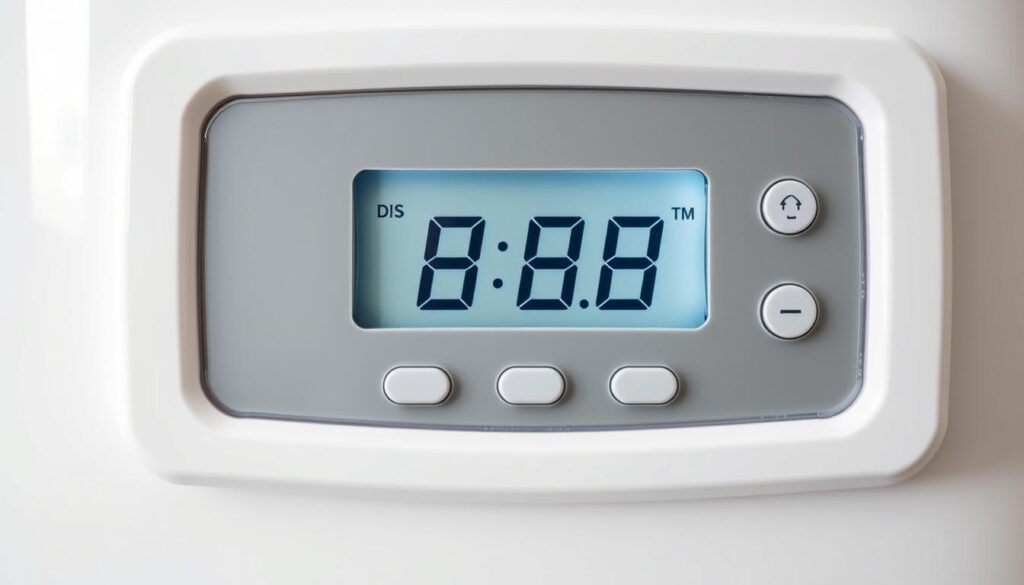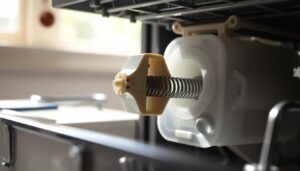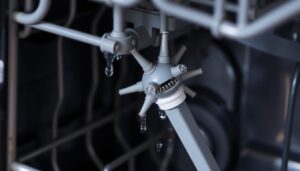Are you tired of experiencing inconsistent hot water temperatures or, worse still, having no hot water at all? A malfunctioning hot-water cylinder timer could be the culprit. This simple device plays a crucial role in regulating your hot water supply, and resetting it might be the solution you need.
Understanding how to reset your hot-water cylinder timer can save you time and money by avoiding unnecessary service callouts. In this guide, we will walk you through the process, helping you identify common issues and providing a step-by-step solution to get your hot water running smoothly again.
Key Takeaways
- Learn to identify signs that indicate your hot-water cylinder timer needs resetting.
- Understand the different types of hot-water cylinder timers and their functions.
- Discover how a properly functioning timer can optimise your hot water usage.
- Find out how resetting your timer can potentially reduce energy costs.
- Gain the confidence to reset your timer without calling a professional service.
Understanding Your Hot-Water Cylinder and Timer
The hot-water cylinder timer is a vital device that allows you to control your energy usage. By regulating when your cylinder heats water, you can enjoy hot water when needed while saving energy during periods of low demand.
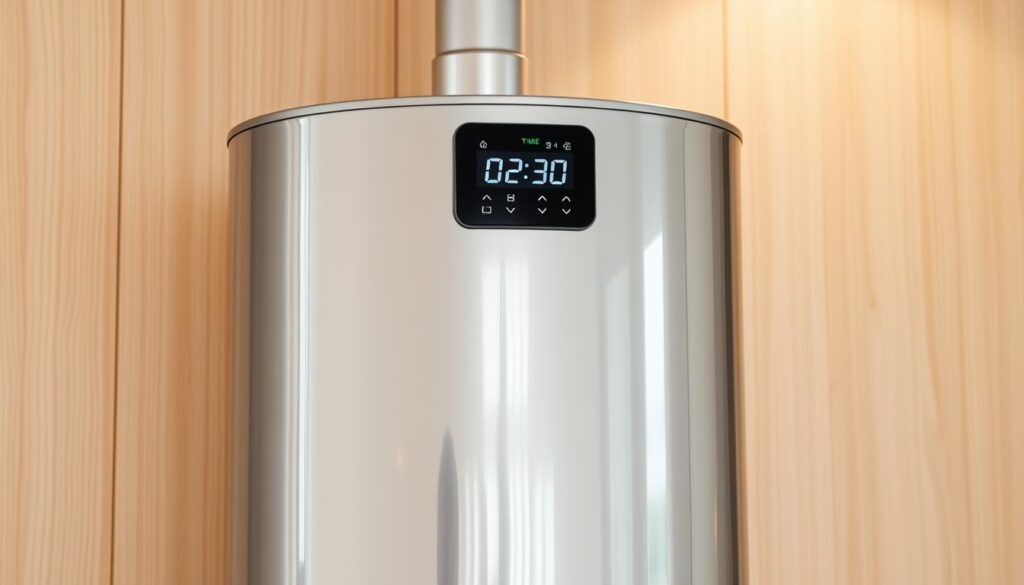
What Is a Hot-Water Cylinder Timer?
A hot-water cylinder timer is an essential component that controls the heating of water in your cylinder. It allows you to set a schedule for when the water should be heated, ensuring you have hot water available when needed.
Using a timer helps in reducing energy consumption by heating water only during specified times, thus making your hot water system more efficient.
Types of Hot-Water Cylinder Timers
There are several types of timers available for hot-water cylinders, including mechanical, digital, and smart timers. Mechanical timers are simple and cost-effective, operating with a dial to set the time. Digital timers offer more flexibility with programmable settings and LCD displays. Smart timers can be controlled via smartphone apps, providing remote access and scheduling capabilities.
Why Your Hot-Water Cylinder Timer Might Need Resetting
Your hot-water cylinder timer may need resetting due to various reasons such as power outages, battery failures, or programming errors. Resetting the timer can resolve issues like incorrect timing or failure to heat water as scheduled, ensuring your hot water system operates efficiently.
Regular maintenance, including resetting the timer as needed, is crucial for the optimal performance of your hot-water cylinder.
Before You Reset: Quick Checks to Perform
Performing a few simple checks can help determine if resetting your hot-water cylinder timer is necessary. Before taking any drastic measures, it’s essential to ensure that the issue isn’t caused by a simple oversight or a minor adjustment.
Check the Thermostat Settings
First, examine your cylinder’s thermostat settings to ensure they haven’t been accidentally adjusted. A minor knock or bump can alter the temperature setting, affecting the water’s heat. Check that the thermostat is set between 60-65 degrees Celsius for optimal performance. If the temperature is set lower, adjust it accordingly and allow the water to heat back up.
Verify Power Supply to Your Cylinder
Next, verify that your water cylinder is receiving power. Check the fuses, circuit breakers, and connections to ensure they’re secure and functioning correctly. A disrupted power supply can cause issues with your hot water system’s operation, making it seem like the timer needs resetting when it doesn’t.
Inspect for Visible Damage or Issues
Inspect your cylinder and timer for any visible signs of damage or issues, such as water leaks, loose wires, or physical damage. These problems might indicate a more serious issue requiring professional maintenance or repair. Also, check the reset button to ensure it’s not stuck or depressed, which could prevent proper functioning.
By performing these checks, you can identify and potentially resolve simple issues with your hot-water cylinder timer, avoiding unnecessary resets and ensuring your hot water system operates efficiently.
How to Reset Your Hot-Water Cylinder Timer
Resetting your hot-water cylinder timer can seem daunting, but it’s a straightforward process once you understand the steps involved. Your hot-water cylinder is an essential component of your home’s heating hot water system, providing you with a reliable water supply. When the timer malfunctions, it can disrupt your daily routine.
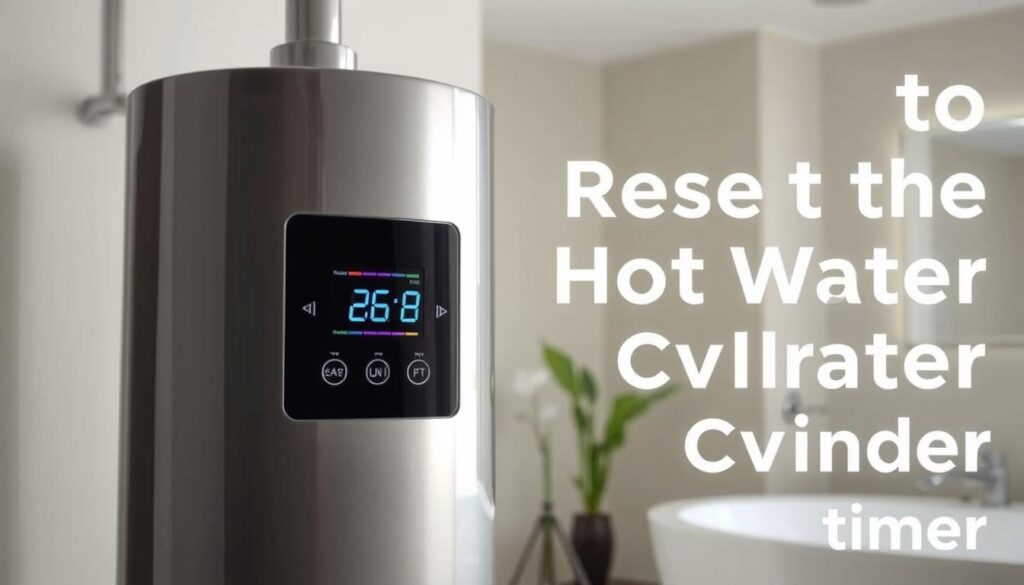
Locating the Reset Button on Your Cylinder
The first step in resetting your hot-water cylinder timer is to locate the reset button. This is typically found near the thermostat or at the bottom of the unit. The reset button may be exposed or hidden under a “lockout” cover. Once you’ve found it, you can proceed to the next step.
Step-by-Step Reset Process
To reset your hot-water cylinder timer, follow these steps:
- Ensure your safety by switching off the power supply to the cylinder at the consumer unit/fuse box.
- Locate the reset button and remove any protective cover.
- Press the reset button firmly until you hear a click.
- Replace the cover and restore power supply to the system.
- Allow sufficient time for the water to heat up before checking if the reset was successful.
If your cylinder doesn’t have a visible reset button, you may need to reset it by adjusting the circuit breaker at your home’s fuse panel/breaker box.
Safety Precautions When Resetting
When resetting your hot-water cylinder timer, safety should be your top priority. Always switch off the power supply before touching any electrical components to avoid the risk of electric shock, especially when working with immersion heaters. If you’re unsure or uncomfortable with the process, consider consulting a qualified service engineer to diagnose and repair any potential problem.
Troubleshooting Common Timer Issues
Troubleshooting timer issues on your hot water cylinder can be a straightforward process if you know where to start. Timers play a crucial role in controlling the heating schedule of your hot water system, and when they malfunction, it can lead to inconsistent hot water supply.
Dealing with Unresponsive Timers
If your timer is unresponsive, first check if the display is showing any error codes or if it’s completely blank. This could indicate power supply issues or internal timer failure. Check the power supply to the timer and ensure it’s receiving the correct voltage.
- Check fuses and circuit breakers related to the timer.
- Verify that the wiring connections are secure and not damaged.
If the issue persists, it may be necessary to consult a professional to diagnose and repair or replace the timer.
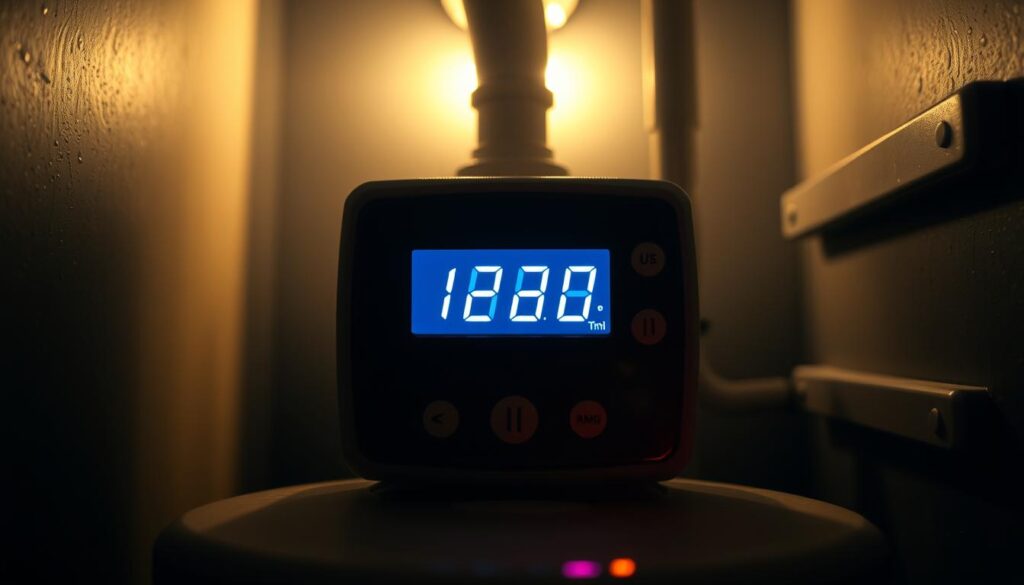
Addressing Frozen Screens and Stuck Buttons
For digital programmers with frozen screens or stuck buttons, try a power cycle by disconnecting the power supply for several minutes before reconnecting. This often resolves minor electronic glitches without requiring professional repair services.
- Disconnect power to the timer.
- Wait for a few minutes before restoring power.
Resolving Power Supply Problems
Power supply problems are a common issue with water heater timers. Check the electrical connections and ensure that the timer is receiving a consistent power supply. Verify that fuses and circuit breakers are not tripped or damaged.
What to Do If Your Cylinder Has No Visible Reset Button
If your unvented cylinder or unvented water heater has no visible reset button, consult your user manual to locate alternative reset methods or access points that may be hidden behind panels or covers. Some models may require a specific sequence of power cycles or button presses to reset.
For persistent issues with water heaters and timers that won’t respond to basic troubleshooting, it may indicate a more serious problem requiring professional maintenance from a qualified engineer who specialises in hot water systems in your area.
Setting and Adjusting Your Hot-Water Cylinder Timer
Configuring your hot-water cylinder timer to align with your daily routine is necessary for energy efficiency. This involves several key steps to ensure that your hot water supply is both convenient and cost-effective.
Setting the Correct Time
Begin by setting the correct time on your timer. This is a crucial first step as all heating hot water schedules will operate based on this reference point. Make sure it’s accurate to the minute to avoid any discrepancies in your hot water supply.
Programming Heating Schedules
Learn how to programme heating hot water schedules that align with your household’s hot water usage patterns. Typically, most homes benefit from heating hot water in the morning and evening, with reduced temperature or no heating during the day when the house is empty. You can adjust these settings based on your specific needs, ensuring that you’re not wasting energy.
Tips for Energy-Efficient Timer Settings
To maximize energy efficiency, set your timer to heat water only when you need it. Avoid constant heating by adjusting the timer based on your routine. Regularly reviewing and adjusting the timer settings to match changes in water usage can also help. For homes with immersion heaters, ensure that the timer is compatible and properly set up.
By following these steps and tips, you can optimize your hot-water cylinder timer for both convenience and energy efficiency. Consider scheduling an annual service to maintain your system’s optimal performance.
Conclusion: When to Call a Professional
While resetting and basic troubleshooting can resolve many timer issues, some problems require the expertise of a qualified heating engineer. If you’ve tried the steps outlined in this guide and still experience issues with your hot-water cylinder timer, it’s advisable to seek professional help.
There are situations where calling a professional is not just recommended but necessary for your home’s heating hot water system. For instance, if your timer continues to malfunction after resetting, or if you notice electrical issues or water leaks around your water cylinder or connections, a qualified service engineer should be contacted.
Professional assistance is crucial for tasks like supplying and fitting immersion heaters or replacing your timer, as these involve working with electrical components and potentially your home’s water supply. Regular annual service is also vital for maintaining your hot water system. It’s recommended to schedule your 2025 annual service by contacting 01619415571 to ensure your system is checked by experienced engineers.
For specialised systems like Santon Premier, brand-specific knowledge is often required for repairs and maintenance, making professional service particularly important. If you’re considering upgrading to digital or smart timers to better adjust timer settings, a professional can provide a quote and ensure proper installation.
When calling for professional help, make sure to describe any error messages, unusual noises, or specific problems you’ve noticed to help the engineer prepare for your service visit. This will ensure a more efficient and effective service, potentially saving you time and preventing damage to your heating hot water system.
